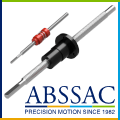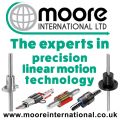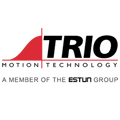
Posted to News on 24th Oct 2016, 00:00
How hard can it be to choose a quick-release connector?
What is a quick-release connector? Just something selected from a catalogue that joins together the likes of fluid and gas lines, and compressed air circuits – or can a connector bring additional useful practical benefits such as reducing down time, eliminating errors and boosting productivity? the experts at Stäubli outline some of the important connector features that are often overlooked.

Different applications can present challenging and specific requirements for connection technology. They will require an optimised connection solution that will provide an easy to use, safe and secure, robust connection capable of performing over numerous cycles with the minimum of maintenance. In most cases the offered solution will be from the extensive range of standard parts but, for more complex applications, an existing product might need to be adapted to meet the specific customer requirements.
So what parameters need to be considered when specifying the right connection solution for a given application?
It is critical to first consider the working environment and then the pressure, temperature and medium. The fluid characteristics could be identical in two different applications but the individual demands of the industry can be very different. For example, minimum weight and high vibration resistance may not be the first requirement of the nuclear industry, but are critical for a Formula 1 car.
Vice-versa, the chances of a coupling being connected via a remote handling device are of no consideration to the Motorsport industry but in nuclear applications this can be basic criteria. And the likes of the military, automotive and pharmaceutical industries all have their own specific demands. Safety has to be given careful consideration, focusing on questions such as: is there a chance of making a cross connection? Is hose whip a danger? What indications are given that a secure connection has been made? All of these questions can be addressed in the connector design: mechanical keying eliminates the possibility of cross connection; colour coding aids with circuit identification; a unique profile on breathing air connectors makes connection to the wrong circuit physically impossible; ‘active safety’ systems to eliminate hose whip on compressed air lines; robust locking systems can be tailored to the application; and direct indication can highlight that a secure connection has been made. The list goes on.
There are many other considerations as well. Does any spillage on connection or disconnection need to be avoided? In such cases, flat face, clean break connectors eliminate completely any spillage. At the same time, air or contaminant ingress is also eliminated, removing any need to purge the circuit. This reduces downtime, improves productivity and maintains the life of the medium. Further, is connecting remotely required, perhaps by manipulator or robot? Is one-handed connection, or connection in a difficult to reach location important? Will the operator be wearing gloves? Thse are all further requirements that regularly are raised by users.
Are several circuits being connected? Is it an advantage for multiple media to be connected simultaneously such as electrical, signal, data, fluids and gases? In this instance solutions can be offered using a multi-coupling plate, which makes all service connections safely and simultaneously in one simple action, so eliminating any chance of cross connections and with locking systems that ensure security.
These are just some of the requirements that need to be considered to ensure selection of the most suitable connectors. All too often, though, connector requirements are overlooked or given scant attention late in a project. But bringing in experts in connection solutions early in the project, at the design stage ideally, and users will benefit from that expertise and reap the advantages of the right connection solution for the application.
















